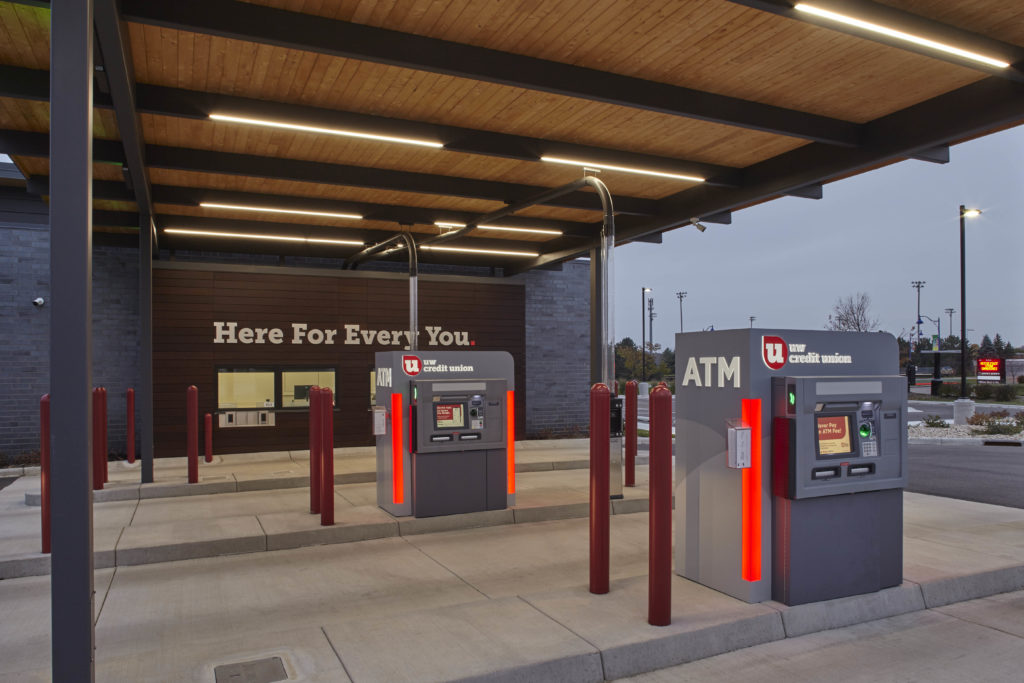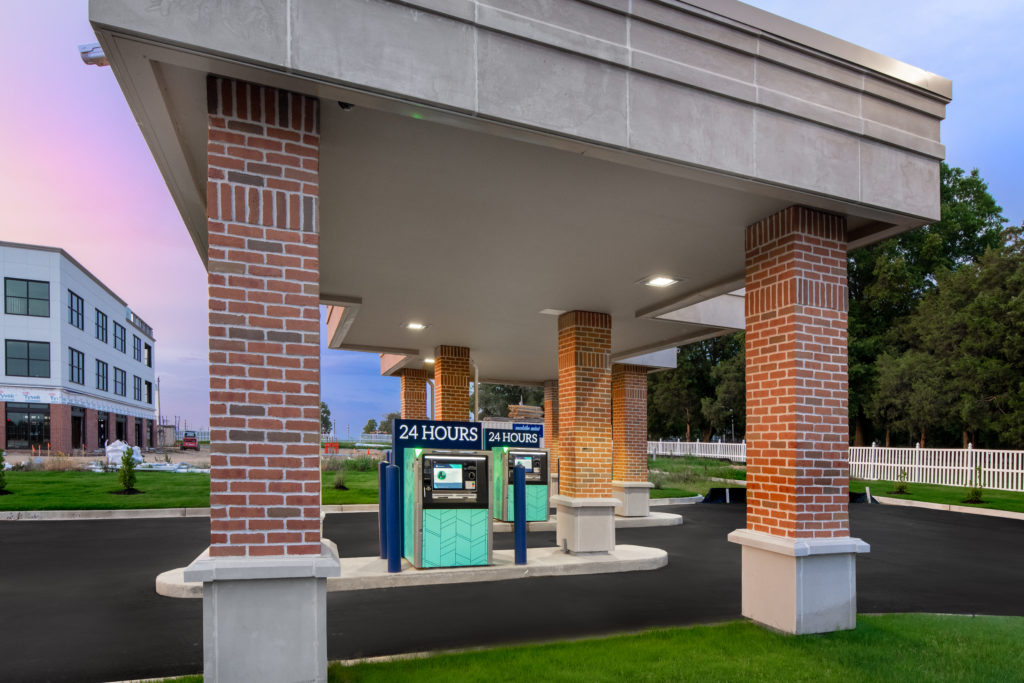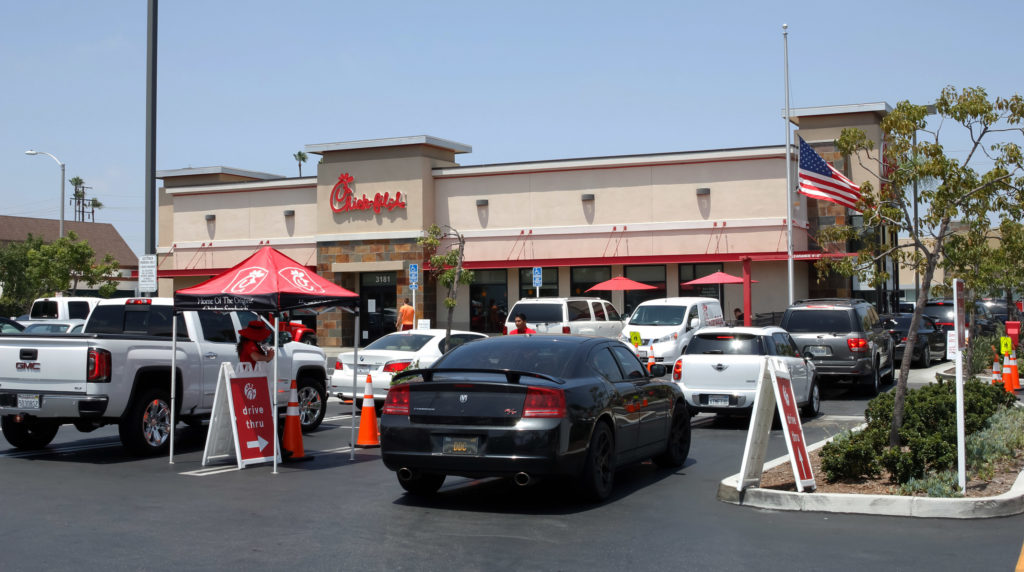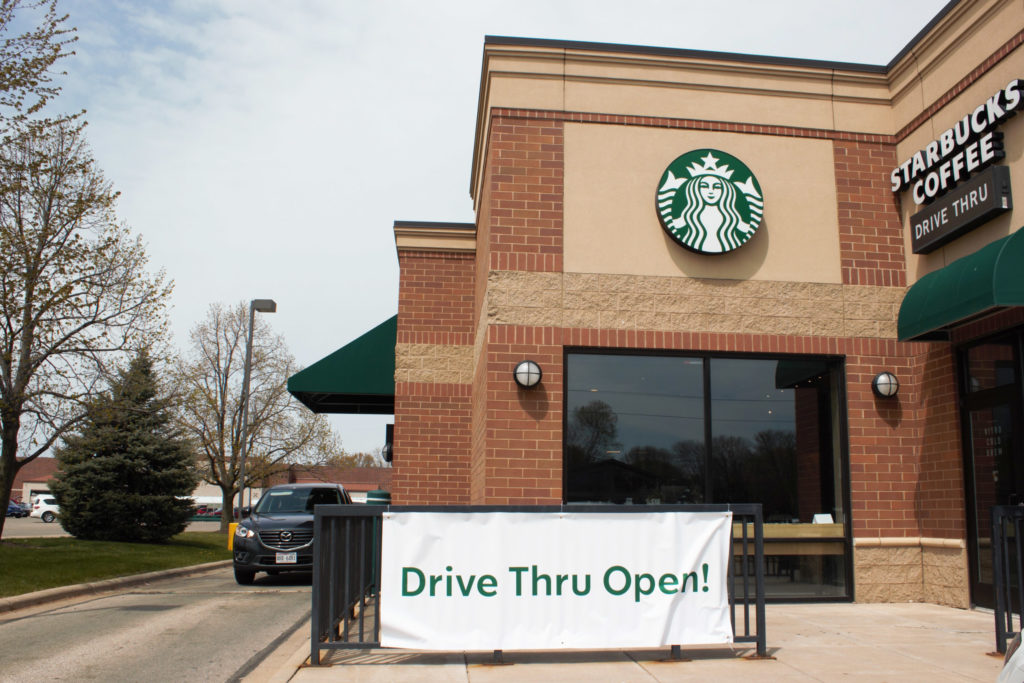What banking can learn from service sector frontrunners like Starbucks and Chick-fil-A
For most banks and credit unions in pre-COVID days, the drive-up was a rarely thought of vestige of a bygone era. A leftover window from the past that had to be present for the sake of overflow and convenience, this channel hadn’t markedly changed from its automotive roots. With little or no branding, signage, or merchandising, the drive-up has been something banks aren’t necessarily proud to highlight, so they often got tucked away in the backs of buildings. Drive-ups were channels made to serve a need, not take center stage. But now a pandemic has changed the landscape, shining a light on the power of this sometimes neglected channel.
With 99.2% of bank branches remaining open through COVID – largely through drive-thrus and to a lesser degree via in-branch appointments – the drive-up window has become the most visible representation of a bank’s brand. Given that as recently as 2016, bank drive-ups were home to an estimated 60-65% of transactions and customer satisfaction in banking comes from properly choreographing all channels – digital, branch, drive-up, or ATM – the drive-up remains a critical way to engage. For decades, the drive-up has cut consumer wait times and provided extended hours, but now this legacy channel is seeing a resurgence as the pandemic wears on, a trend that’s expected to endure.

Despite the drive-up’s renewed popularity, banks continue to grapple with the right balance of digital and physical as the pandemic endures. Seen by some as a time-worn channel with dated technology, banks have been struggling with what to do with their drive-ups as they strive to optimize the branch banking experience. In fact, according to Novantas in the Wall Street Journal on the drive-up’s COVID comeback, “Banks, though, have been closing their drive-through lanes for at least a decade.” To bridge the physical and digital divide, some banks are already embracing a more progressive vision of the drive-up with ITMs allowing for more complex transactions powered by human consultation.

Service First
Throughout the pandemic, the drive-up has been providing banking service continuity, but most are un-branded, sterile, impersonal experiences. Yet, not all drive-ups are that unremarkable and utilitarian. Other service sector companies have envisioned the drive-up as an extension of their brands, with superior exterior service delivery that not only matches the interior experience but also aligns with the overall experience consumers have come to expect. Given the current trends, banking in a post-COVID world will include a focus on the drive-up, demanding an upgrade to exterior service delivery. The good news is that banking has some other service leaders to look to for inspiration.

Chick-fil-A
What can the banking industry learn from service leaders like Chick-Fil-A about drive-up? A brand that’s known for its gracious service, the southern chicken brand is a pioneer of putting its well-trained, friendly, and empathetic staff in the drive-up as greeters taking orders—an approach that’s helped propel its rise to the US’s third-largest restaurant chain. The magic of Chick-fil-A’s experience is its well-choreographed balance of efficiency and high-touch service that translates the branded service experience inside the restaurant to the drive-thru.
A zoned approach to communications meets “guests” where they are in the drive-up line, with messaging specifically designed to inform, entice, and prepare them to order. Highly visible associates stationed at key areas along the queue welcome cars with a warm, personalized greeting. Hand-held tablets and app integration allow ordering and payment transactions to happen before the window, allowing it to focus solely on accurate food delivery.
Long before COVID, the drive-thru experience helped set the Chick-Fil-A brand apart. Now, during the COVID-driven new normal, the brand is successfully “luring diners back” to the restaurant through its drive-thru, according to the Pittsburgh Post-Gazette. Consistently ranked as one of the most beloved fast-food brands, Chick-Fil-A remains the standard-bearer for drive-up service.

Starbucks already had a massive digital footprint with its popular app that integrated functionality and fun rewards, but now COVID has revealed a new role for its mobile tool – social distancing efficiency. Today, consumers place their orders on the app in advance and quickly and safely pick up their coffee. The level of personalization the coffee giant is known for remains, even in the wake of the pandemic, with consumers addressed by name and given their customized, perfectly crafted beverage.
Their personalized response to COVID proves that even if you are behind a mask – or even if you never leave your car – you don’t become anonymous to the brand. Starbucks has also made their drive-up facades as attractive, branded, and appealing as the front facades drawing consumers in. The brand known for its decidedly human approach has found success even in the midst of a pandemic and is doubling down on its drive-thru strategy as it shifts its urban focus more toward the suburban markets.
Service Solutions
In developing consumer-oriented solutions to our new COVID reality, banking does not have to reinvent the wheel to effectively leverage the drive-up channel. Using the power of your people and some innovative and customer-centric approaches, there are short and long-term solutions financial brands can adopt to overcome the current state of the drive-up and create a vehicle for continued engagement. The four central steps to take to strengthen the drive-up channel include staff, wayfinding, branded elements and communications.
- STAFF – Your people are what will make the most impact in the drive-up. While safety gear is priority #1, branded trade dress worn by staff members is important to help distinguish them among the public, particularly if they’re staffed outdoors supporting the window. A branded approach to service – signature greetings, for example – infused throughout all customer interactions inside and outside the branch can help elevate the drive-up experience. Training staff to personally greet customers and choreograph their experience is what will make a lasting impact on consumers. Staff should also use this opportunity to reinforce awareness of alternate channels.
- WAYFINDING – Signage for wayfinding should be clearly displayed on the exterior of the facility. The last thing any bank wants is consumer confusion. Changing lobby hours, traffic flows and volume make drive-up area wayfinding more important than ever. New wayfinding options that are easily shifted without requiring wholesale exterior signage changes include refreshing of existing directional signs, sandwich boards, and lane-specific blade signs.
- BRANDED ELEMENTS – Exterior branding isn’t just exterior signage; it’s any part of your branch that appears uniquely reflective of your brand. In addition to the signage itself, exterior branding includes:
- Architectural elements (Like the IHOP roof)
- Functional-turned-unique elements (Like the Target parking lot balls)
- Color (Like the Dunkin Donuts pink and red or Home Depot orange)
- Lighting (Like the Chase blue branch lighting)
- Window Graphics (Like CVS with their cool window textures)
- Awnings and umbrellas (Like Starbucks and Einstein Bagels)
Things to consider for enhancing exterior branded elements include: painting bollards; painting or graphic-covering architectural elements around the drive-up; window graphics with branded texture; branded umbrellas or tents for staff; and enhanced ATM surrounds with brand colors and textures.
- COMMUNICATIONS – Brand messaging should be a prominent part of your exterior drive-up. Apply an empathy-led approach to communications, matching messaging with the audiences’ unique needs state. A thoughtful communications strategy applied to elements like merchandising banners; on-building vinyl or fixture-based signs; bollard sleeve covers; digital signage; window clings; and sandwich boards can create an immersive outside-the-branch experience. Finally, create a throughline between brand messaging online, in-branch, and in the exterior drive-up, ensuring you communicate with consistency – not repetition – across all channels.
The Takeaway
Enhancing the drive-up is the low-hanging fruit of the banking industry. With the branch as the number #1 driver of new customer acquisition, more branch billboarding presence equals more impressions and thus, greater consideration. For the same reason, financial brands must merchandise inside and outside of the branch. The informational focus in communications is especially important to supporting new traffic flows and hours, but the opportunity for cross-sell with the drive-up is ripe and ready. Customers are sitting in cars waiting, which makes them a captive audience for your messaging. Use this rich opportunity to tell them all the ways you can help them.
For more information on bank branch reopening in the post-COVID landscape, download our Roadmap to Reopening. If you need help preparing your staff for post-COVID branch operations, see our Frontline Staff Engagement Training series. For financial institutions needing advice and expertise now, contact Adrenaline’s financial services experts at info@adrenalinex.com or call (678) 412-6903.